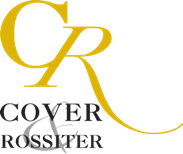To ensure a great experience with your CPA, get optimal results and a faster turnaround, you should follow these tips below:
- Review your past year's tax return to familiarize yourself with what you reported income, adjustments and deductions last year. This will serve as a good guide for the categories of income and expenses you'll need to tell your accountant.
- Look for any information - such as your address or dependents - that may have changed, and make a note to tell your accountant.
- Don't send piles of receipts to your tax payer. Instead bring to your appointment a list of those items organized by category (for example, home, office, rental property, charity, etc.).
- Being disorganized and unprepared wastes time, which will cost you money.
- Open any envelopes with the words "tax information" or "tax documents" and sort the contents by category before you meet with your tax person.
- Remember to organize and bring:
- Real estate tax receipts if you don't pay those taxes through escrow.
- A new baby's Social Security number (needed to claim the child as a dependent).
- The taxpayer-ID numbers, addresses, and phone numbers of child-care providers. - Remember that all charitable cash donations, no matter how small, must be substantiated either by a canceled check, a bank record with the charity's name, donation amount, and date; or a detailed receipt from the chairty, or the contribution is not deductible. So collect everything in one place. Did you drive your personal vehicle to do work for a chairty? That mileage may be deductible, at 14 cents per mile.
- Gather your cost of investments sold. Cost basis is the purchase price, plus the transaction fees, etc of the investments you own.
- Tell your preparer about major purchases such as a new vehicle, purchase of a home, refinance of your mortgage and even some major home improvements made in 2011. Doing so can save you real money.
- Provide a list of the improvements, description and cost of any energy saving improvments made to your home in 2011.
- Points, interest and property taxes paid in connection with the refinance of your mortgage or a home purchase can also be deductible.
We hope this list is helpful to you and will ease your tax experience. Contact us at Cover & Rossiter to get more information on our tax services. Call us at 302-656-6632.









